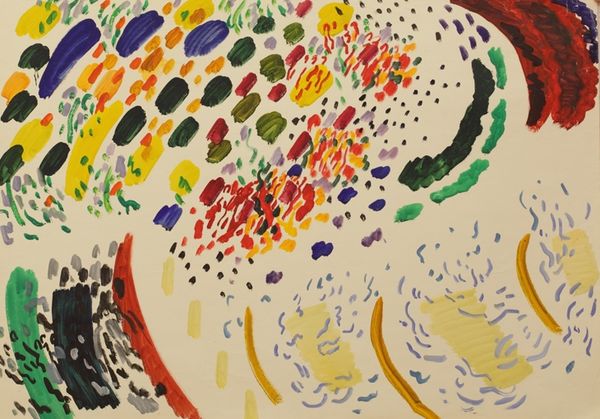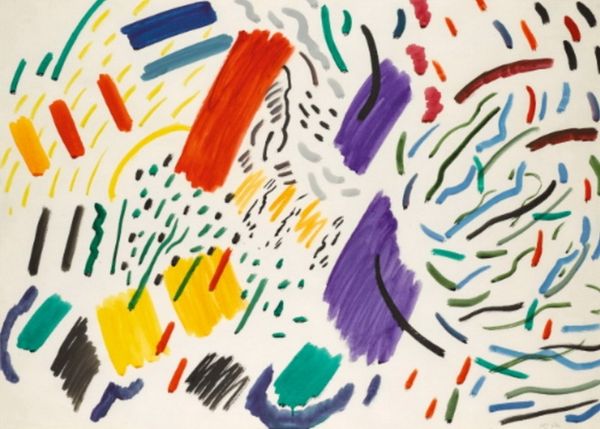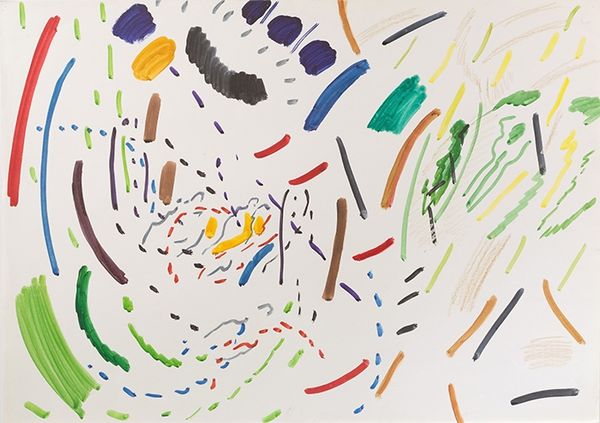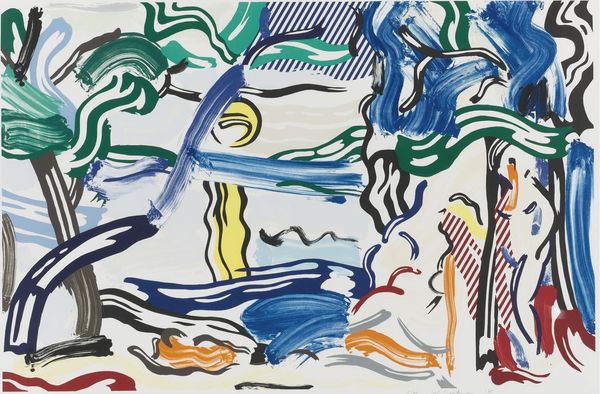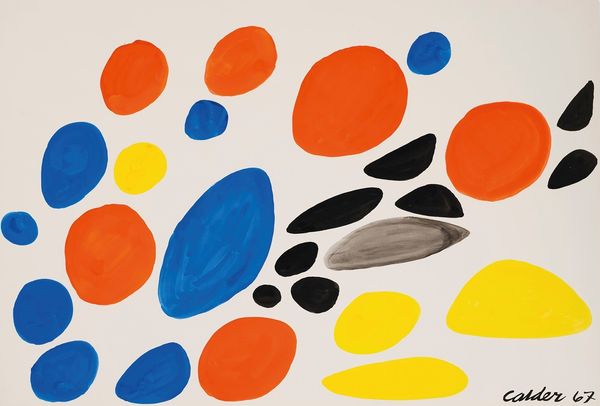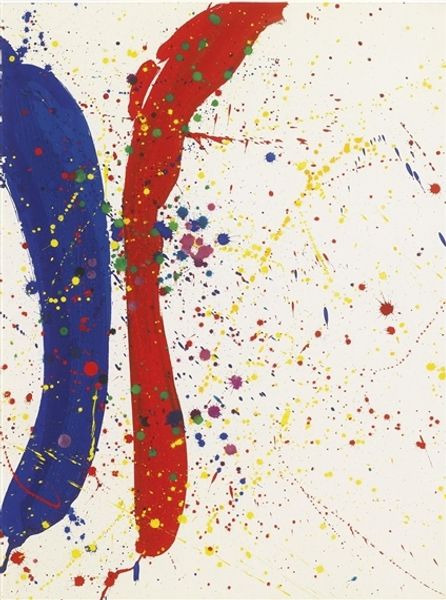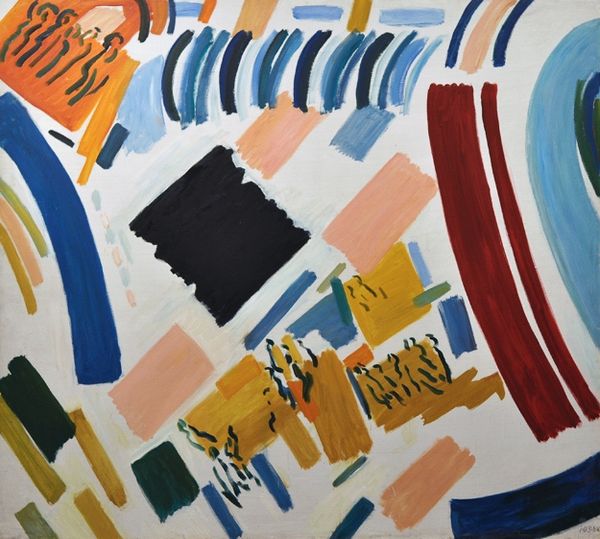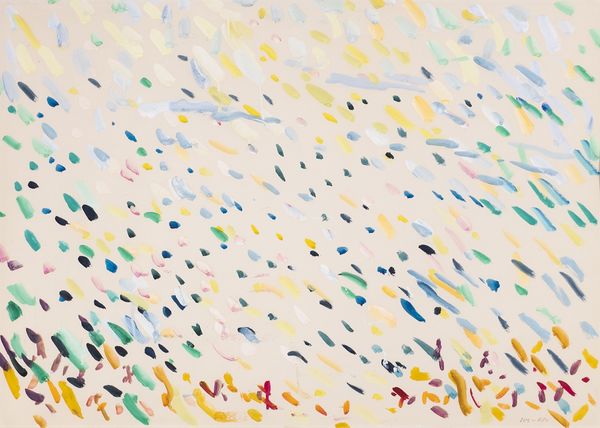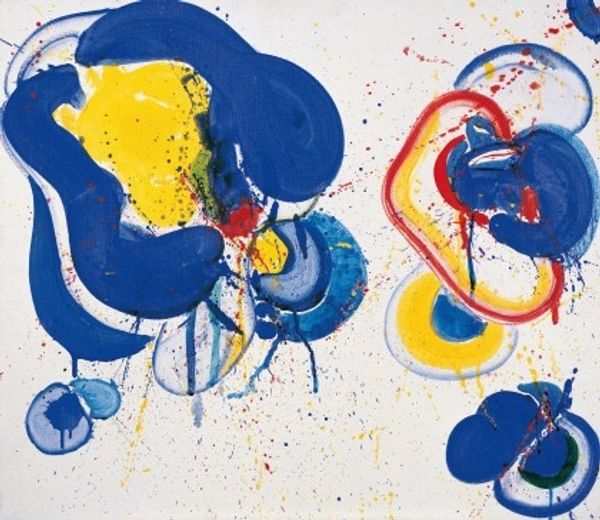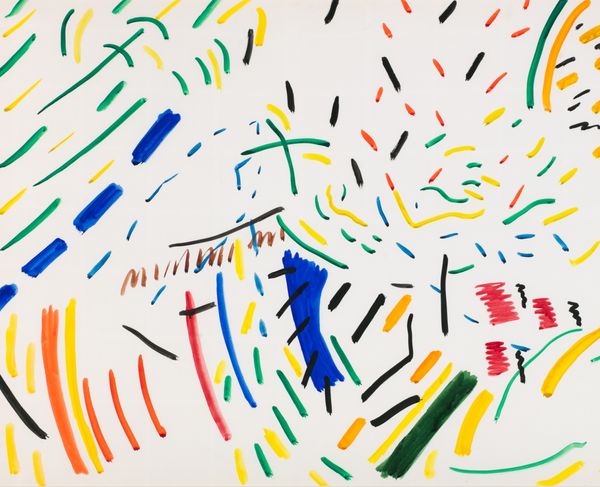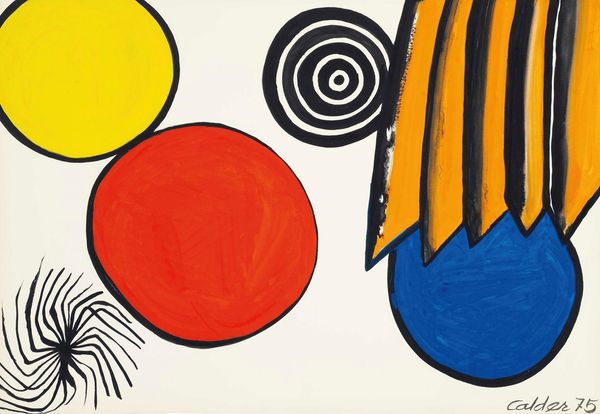
painting, acrylic-paint
#
contemporary
#
painting
#
acrylic-paint
#
abstract
#
geometric pattern
#
geometric
#
geometric-abstraction
Dimensions: 60 x 84.5 cm
Copyright: Yuri Zlotnikov,Fair Use
Curator: This is Yuri Zlotnikov’s “Composition #71” from 1982. Painted using acrylic on canvas, it is a vibrant example of the artist's signature geometric abstraction. Editor: My first impression is that it feels like a burst of summer, a playful arrangement of colors and forms. I sense dynamism but also a controlled energy, it's joyful and spontaneous. Curator: Indeed. Zlotnikov emerged as a key figure within the Soviet Nonconformist Art movement. Looking at this work, we must remember the socio-political climate of the time. Geometric abstraction provided a visual language that sidestepped direct representation, and, therefore, the stifling constraints of socialist realism. These forms were politically subversive. Editor: I am drawn to the recurrence of certain shapes. There’s the dash, the comma-like form. And that circular, almost embryonic shape nestled at the bottom right— it feels like a recurring visual motif, a symbolic language that speaks to cycles and continuity. It hints at a deeper psychological landscape beneath the surface of playful color. Curator: It's worth noting that Zlotnikov was deeply engaged with semiotics and systems theory, striving to create a universal visual language that could transcend cultural and linguistic barriers. The repetition of those 'dash' and 'comma' shapes, for me, evokes early experiments with computer programming and binary code— perhaps an early expression of algorithmic structures entering the collective consciousness. Editor: That brings a fascinating layer to my initial observation of cyclical forms, these micro shapes feel like they are hinting at life or beginning, they do offer an important code. These images can symbolize new cultural paradigms emerging. Even today we could see it as new technology, algorithms, even genetics. Curator: The deliberate composition offers more than simply vibrant arrangements of shapes. The use of contrasting color palettes—the cool blues against the warm reds and yellows, is critical to a system he constructed as a method to promote understanding and awareness. Editor: Well, thinking of Zlotnikov's symbols, colors, and arrangement – the totality of his construction and awareness that we can each gather differently by what each knows is its own kind of important. Curator: Ultimately, with the lens we’ve examined “Composition #71” a work that invites us to consider how artists use abstract languages to reflect upon socio-political contexts. Editor: And in thinking of this piece, Zlotnikov uses archetypal symbols that exist outside of time, they give enduring form to new technology and genetics of an old system.
Comments
No comments
Be the first to comment and join the conversation on the ultimate creative platform.

